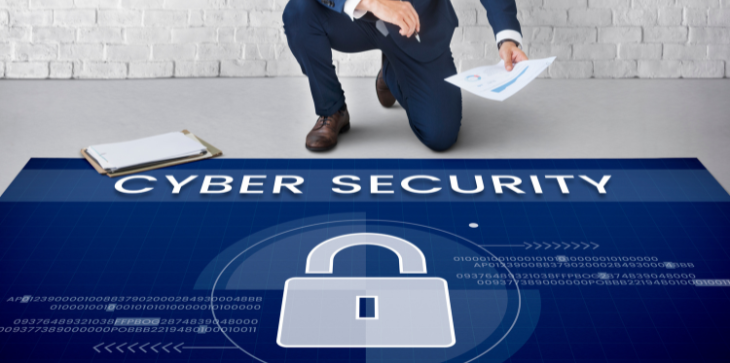Enhancing Cyber Security in Company

In today’s business landscape, companies are increasingly relying on technology to operate efficiently. The rise of sophisticated cyberattacks can lead to significant financial losses. Therefore, it is imperative for organizations to enhance their cyber security not only for technical needs but also as a strategic necessity.
Understanding Cybersecurity
What is meant by cybersecurity?
Cybersecurity refers to the practices and technologies designed to protect networks, devices, and data from unauthorized access, attacks, damage, or theft. This protection encompasses various domains, including application security, information security, network security, and operational security.
Conducting a Risk Assessment
The first step in improving cybersecurity is to conduct a comprehensive risk assessment. This assessment identifies vulnerabilities within the digital infrastructure and evaluates the potential risks associated with these vulnerabilities in the organization. Companies should consider various factors, including the types of data they handle, regulatory compliance requirements, and the potential impact of a cyber incident.
A risk assessment should involve:

- Identifying Assets: Determine which assets need protection, such as sensitive customer data, intellectual property, and financial records.
- Evaluating Vulnerabilities: Analyze the existing security measures and identify weaknesses that attackers could exploit.
- Assessing Threats: Understand potential threats, including malware, phishing attacks, insider threats, and ransomware.
- Estimating Impact: Evaluate the potential impact of a successful cyberattack on the organization, including financial losses, operational disruptions, and reputational damage.
Implementing Robust Security Policies
Once risks are identified, organizations should develop and implement strong cybersecurity policies. These policies should be comprehensive, addressing various aspects of cybersecurity, including access controls, data protection, incident response, and employee training. Clear policies help ensure that all employees understand their roles and responsibilities concerning cybersecurity.
- Access Control Policy: Implement strict access control measures, ensuring that employees only have access to the data and systems necessary for their roles. This principle of least privilege minimizes the risk of unauthorized access to sensitive information.
- Incident Response Policy: Establish a clear incident response plan that outlines the steps to take in the event of a cybersecurity incident. This plan should include roles and responsibilities, communication protocols, and recovery procedures.
Regular Software Updates and Patch Management
Cybercriminals often exploit vulnerabilities in outdated software and applications. Therefore, it is crucial for companies to implement a robust software update and patch management strategy. This process includes:
- Automatic Updates: Enable automatic updates for all software and applications to ensure they are always running the latest version, which includes critical security patches.
- Patch Management Policy: Develop a patch management policy that outlines the process for identifying, testing, and deploying patches in a timely manner. Prioritize patches based on the severity of vulnerabilities.
- Monitoring and Reporting: Continuously monitor the network for any software vulnerabilities and ensure timely reporting and remediation.
Investing in Advanced Security Technologies
To further enhance cybersecurity, companies should consider investing in advanced security technologies. These tools can provide comprehensive protection against various cyber threats. Key technologies to consider include:
- Firewalls: Firewalls serve as a barrier between trusted internal networks and untrusted external networks. They can help block unauthorized access and filter malicious traffic.
- Data Encryption: Implement data encryption for sensitive information, both at rest and in transit. Encryption helps protect data from unauthorized access even if it is intercepted.
- Endpoint Protection: With the rise of remote work, securing endpoints such as laptops and mobile devices is crucial. Endpoint protection solutions offer antivirus, anti-malware, and threat detection capabilities.
- Intrusion Detection and Prevention Systems (IDPS): These systems monitor network traffic for suspicious activity and can take action to block potential threats in real time.
- Security Information and Event Management (SIEM): SIEM solutions aggregate and analyze security data from across the organization, enabling real-time monitoring and threat detection.
Regular Security Audits and Compliance Checks
Conducting regular security audits and compliance checks is essential to ensure that the organization’s cybersecurity measures remain effective. These audits help identify gaps or weaknesses in the security posture and provide opportunities for improvement.
- Internal Audits: Conduct periodic internal audits to assess the effectiveness of existing security policies and practices.
- Third-Party Assessments: Consider hiring third-party security experts to perform independent assessments. Their expertise can provide valuable insights and recommendations.
In an era where cyber threats are a constant reality, enhancing cybersecurity is vital for companies of all sizes. By conducting thorough risk assessments, implementing robust security policies, and investing in advanced security technologies, organizations can establish a strong defense against cyber threats.
Moreover, having a comprehensive incident response plan and conducting regular audits will ensure that companies are prepared to respond effectively to any security incidents. By prioritizing cybersecurity, businesses not only protect their assets and data but also build trust with customers and stakeholders.
If you encounter difficulties in implementing preventive measures against cyberattacks, feel free to contact us





